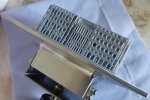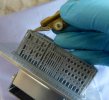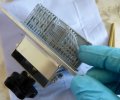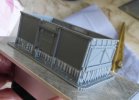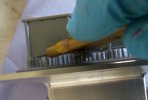simond
Western Thunderer
FEP = Fluorinated ethylene propylene - Wikipedia
it is the "transparent plastic" material from which the said "sheet" is made
it is the "transparent plastic" material from which the said "sheet" is made
With the Photons, Anycubic recommend using a spacer to set the initial "slack" in the FEP which is then tensioned as you suggest. Insufficient slack to start with could cause the FEP to be overtensioned when tightening the screws. Also FEP stretches over time so may not maintain its tightness. I use a 13mm bottle cap to tension mine (I actually printed a 13mm cap rather than use one off a bottle) however I have used and seen people tuning their FEP to a specific frequency range.I'm guessing the Phrozen uses a securing ring around the base of the vat that pulls in the FEP as you tighten the screws?
Pretty much like Epax and you don't really get much choice in the tension setting, it is what it is. So long as it remains constant then tension isn't as critical as it can be, all one needs do is adjust exposure times to get the best results.
How do you know that the film has stretched? What can be done to restore the tension?... FEP stretches over time so may not maintain its tightness.
Because your prints look likeHow do you know that the film has stretched? What can be done to restore the tension?
thank you, Graham
 in the bottom of the VAT.
in the bottom of the VAT.Being stretched it reacts like a drum when tapped with the fingers and this frequency can be detected and tuned using a tuning app on a mobile phone.
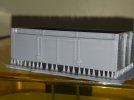
 I still haven't found out what the "Parallel" function actually does.
I still haven't found out what the "Parallel" function actually does. 
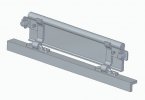
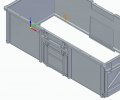
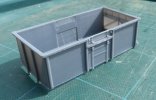
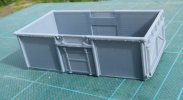

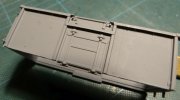
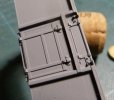
 I can still see some in the pictures which I couldn't see in my hand under the work light.
I can still see some in the pictures which I couldn't see in my hand under the work light. 

Looks great!
but ... you won't be able to pull the securing wedges at the top doors until you cut back the top angle profile a little bit.

That looks excellent to me. I'm struggling with anything large, could you possibly put up a photo of the body with your support system still in place please? (so I can shamelessly copy it of course).
Robin
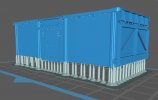
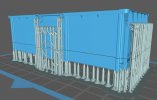
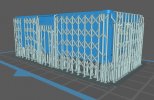

How did you draw the model hinges to provide a realistic representation of the prototype?I actually avoided having to do any supporting of the hinges on the top door by drawing them to avoid overhangs which I managed to do without compromising the part.
Looks great!
but ... you won't be able to pull the securing wedges at the top doors until you cut back the top angle profile a little bit.
View attachment 161359
Michael

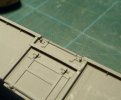
Thanks for the comprehensive reply Jim, I will have a go next week. I've got Covid this week and after an easy start the last 2 days have been written off in bed. Thankfully feeling more lively today . Robin
